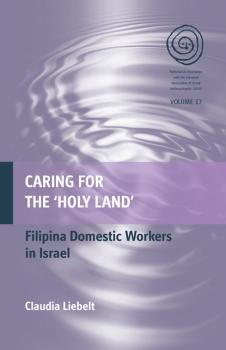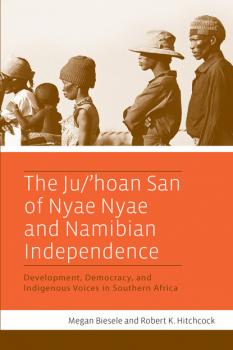MREADZ.COM - много разных книг на любой вкус
Скачивание или чтение онлайн электронных книг.Caring for the 'Holy Land'
In Israel, as in numerous countries of the global North, Filipina women have been recruited in large numbers for domestic work, typically as live-in caregivers for the elderly. The case of Israel is unique in that the country has a special significance as the ‘Holy Land’ for the predominantly devout Christian Filipina women and is at the center of an often violent conflict, which affects Filipinos in many ways. In the literature, migrant domestic workers are often described as being subject to racial discrimination, labour exploitation and exclusion from mainstream society. Here, the author provides a more nuanced account and shows how Filipina caregivers in Israel have succeeded in creating their own collective spaces, as well as negotiating rights and belonging. While maintaining transnational ties and engaging in border-crossing journeys, these women seek to fulfill their dreams of a better life. During this process, new socialities and subjectivities emerge that point to a form of global citizenship in the making, consisting of greater social, economic and political rights within a highly gendered and racialized global economy.
The Annoying Difference
The Muhammad cartoon crisis of 2005−2006 in Denmark caught the world by surprise as the growing hostilities toward Muslims had not been widely noticed. Through the methodologies of media anthropology, cultural studies, and communication studies, this book brings together more than thirteen years of research on three significant historical media events in order to show the drastic changes and emerging fissures in Danish society and to expose the politicization of Danish news journalism, which has consequences for the political representation and everyday lives of ethnic minorities in Denmark.
Youth Gangs and Street Children
The rapidly expanding population of youth gangs and street children is one of the most disturbing issues in many cities around the world. These children are perceived to be in a constant state of destitution, violence and vagrancy, and therefore must be a serious threat to society, needing heavy-handed intervention and ‘tough love’ from concerned adults to impose societal norms on them and turn them into responsible citizens. However, such norms are far from the lived reality of these children. The situation is further complicated by gender-based violence and masculinist ideologies found in the wider Ethiopian culture, which influence the proliferation of youth gangs. By focusing on gender as the defining element of these children’s lives – as they describe it in their own words – this book offers a clear analysis of how the unequal and antagonistic gender relations that are tolerated and normalized by everyday school and family structures shape their lives at home and on the street.
Imagining the Post-Apartheid State
In northwest Namibia, people’s political imagination offers a powerful insight into the post-apartheid state. Based on extensive anthropological fieldwork, this book focuses on the former South African apartheid regime and the present democratic government; it compares the perceptions and practices of state and customary forms of judicial administration, reflects upon the historical trajectory of a chieftaincy dispute in relation to the rooting of state power and examines everyday forms of belonging in the independent Namibian State. By elucidating the State through a focus on the social, historical and cultural processes that help constitute it, this study helps chart new territory for anthropology, and it contributes an ethnographic perspective to a wider set of interdisciplinary debates on the State and state processes.
The Ju/’hoan San of Nyae Nyae and Namibian Independence
The Ju/’hoan San, or Ju/’hoansi, of Namibia and Botswana are perhaps the most fully described indigenous people in all of anthropology. This is the story of how this group of former hunter-gatherers, speaking an exotic click language, formed a grassroots movement that led them to become a dynamic part of the new nation that grew from the ashes of apartheid South West Africa. While coverage of this group in the writings of Richard Lee, Lorna Marshall, Elizabeth Marshall Thomas, and films by John Marshall includes extensive information on their traditional ways of life, this book continues the story as it has unfolded since 1990. Peopled with accounts of and from contemporary Ju>/’hoan people, the book gives newly-literate Ju/’hoansi the chance to address the world with their own voices. In doing so, the images and myths of the Ju/’hoan and other San (previously called “Bushmen”) as either noble savages or helpless victims are discredited. This important book demonstrates the responsiveness of current anthropological advocacy to the aspirations of one of the best-known indigenous societies.
Unsafe Motherhood
Since 1987, when the global community first recognized the high frequency of women in developing countries dying from pregnancy-related causes, little progress has been made to combat this problem. This study follows the global policies that have been implemented in Sololá, Guatemala in order to decrease high rates of maternal mortality among indigenous Mayan women. The author examines the diverse meanings and understandings of motherhood, pregnancy, birth and birth-related death among the biomedical personnel, village women, their families, and midwives. These incongruous perspectives, in conjunction with the implementation of such policies, threaten to disenfranchise clients from their own cultural understandings of self. The author investigates how these policies need to meld with the everyday lives of these women, and how the failure to do so will lead to a failure to decrease maternal deaths globally.
Protest Beyond Borders
The protest movements that followed the Second World War have recently become the object of study for various disciplines; however, the exchange of ideas between research fields, and comparative research in general, is lacking. An international and interdisciplinary dialogue is vital to not only describe the similarities and differences between the single national movements but also to evaluate how they contributed to the formation and evolution of a transnational civil society in Europe. This volume undertakes this challenge as well as questions some major assumptions of post-1945 protest and social mobilization both in Western and Eastern Europe. Historians, political scientists, sociologists and media studies scholars come together and offer insights into social movement research beyond conventional repertoires of protest and strictly defined periods, borders and paradigms, offering new perspectives on past and present processes of social change of the contemporary world.
Searching for a Cultural Diplomacy
Recent studies on the meaning of cultural diplomacy in the twentieth century often focus on the United States and the Cold War, based on the premise that cultural diplomacy was a key instrument of foreign policy in the nation’s effort to contain the Soviet Union. As a result, the term “cultural diplomacy” has become one-dimensional, linked to political manipulation and subordination and relegated to the margin of diplomatic interactions. This volume explores the significance of cultural diplomacy in regions other than the United States or “western” countries, that is, regions that have been neglected by scholars so far—Eastern Europe, Asia, and the Middle East. By examining cultural diplomacy in these regions, the contributors show that the function of information and exchange programs differs considerably from area to area depending on historical circumstances and, even more importantly, on the cultural mindsets of the individuals involved.
The Hadrami Diaspora
The Hadramis of South Yemen and the emergence of their diasporic communities throughout the Indian Ocean region are an intriguing facet of the history of this region’s migratory patterns. In the early centuries of migration, the Yemeni, or Hadrami, traveler was both a trader and a religious missionary, making the migrant community both a “trade diaspora” and a “religious diaspora.” This tradition has continued as Hadramis around the world have been linked to networks of extremist, Islamic-inspired movements—Osama bin Laden, leader of Al Qaeda and descendant of a prominent Hadrami family, as the most infamous example. However, communities of Hadramis living outside Yemen are not homogenous. The author expertly elucidates the complexity of the diasporic process, showing how it contrasts with the conventional understanding of the Hadrami diaspora as an unchanging society with predefined cultural characteristics originating in the homeland. Exploring ethnic, social, and religious aspects, the author offers a deepened understanding of links between Yemen and Indian Ocean regions (including India, Southeast Asia, and the Horn of Africa) and the emerging international community of Muslims.
Medicine Between Science and Religion
There is a growing interest in studies that document the relationship between science and medicine – as ideas, practices, technologies and outcomes – across cultural, national, geographic terrain. Tibetan medicine is not only known as a scholarly medical tradition among other Asian medical systems, with many centuries of technological, clinical, and pharmacological innovation; it also survives today as a complex medical resource across many Asian nations – from India and Bhutan to Mongolia, Tibet (TAR) and China, Buryatia – as well as in Western Europe and the Americas. The contributions to this volume explore, in equal measure, the impacts of western science and biomedicine on Tibetan grounds – i.e., among Tibetans across China, the Himalaya and exile communities as well as in relation to globalized Tibetan medicine – and the ways that local practices change how such “science” gets done, and how this continually hybridized medical knowledge is transmitted and put into practice. As such, this volume contributes to explorations into the bi-directional flows of medical knowledge and practice.









